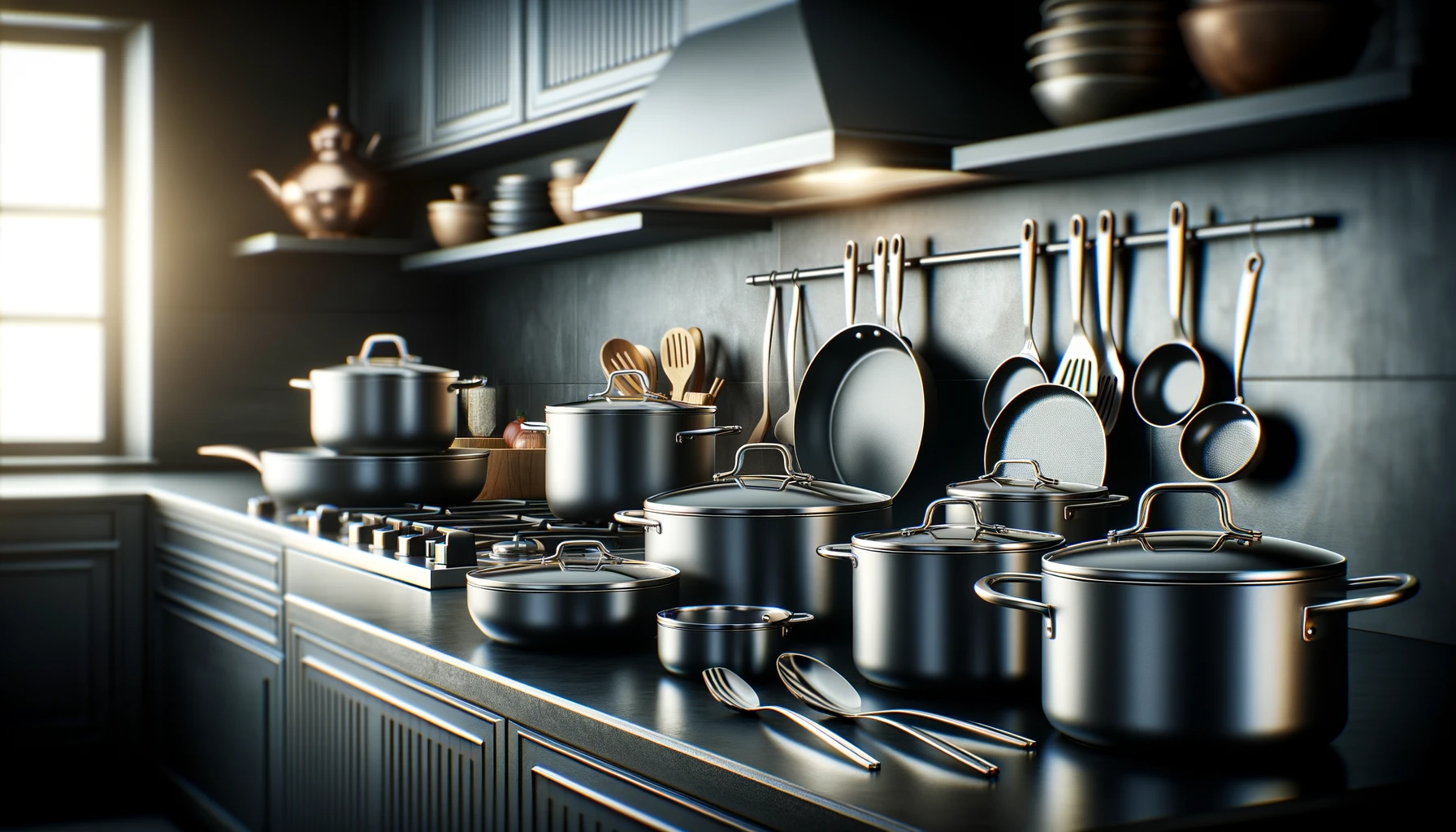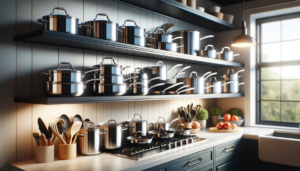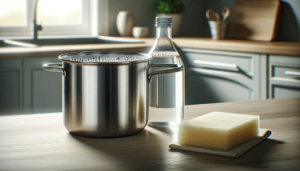Searching for durable pots and pans can rival finding true love these days.
With so many options claiming to be “the one”, how do you decide?
When it comes to comparing hard anodized cookware versus stainless steel, it’s important to weigh factors like durability, cooking performance, ease of use, health safety, cost and aesthetics.
Let’s dive in to see how hard anodized and stainless steel cookware compare across these key considerations and determine a clear winner.
Hard Anodized Cookware vs Stainless Steel: Which is Better?
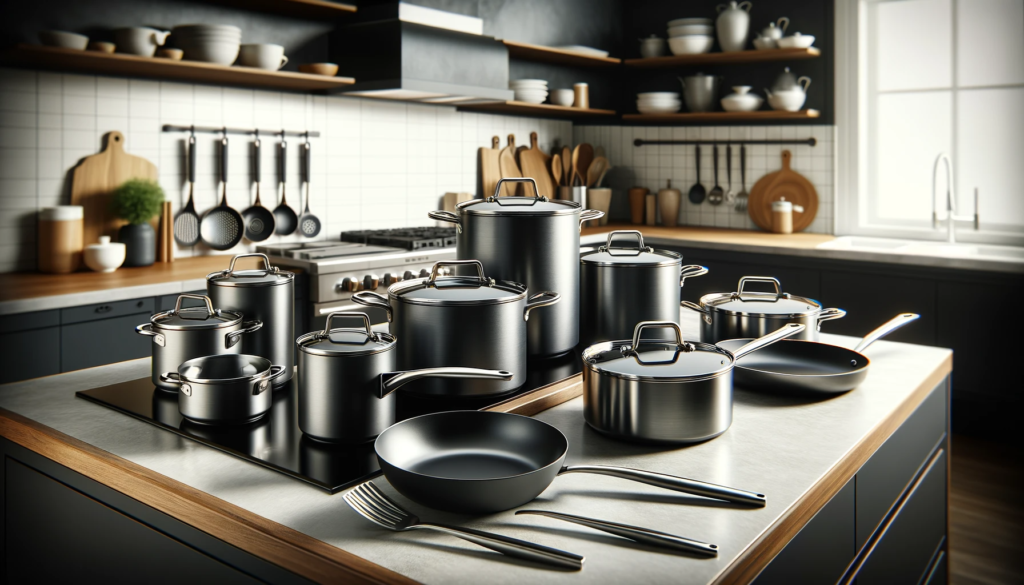
When deciding between hard anodized cookware versus stainless steel, hard anodized is generally the better choice for most home cooks.
Hard anodized pans are more durable, deliver superb cooking performance, offer nonstick convenience, avoid health safety concerns and cost less than stainless steel.
Stainless steel’s only real advantage is visual aesthetic appeal.
We’ll analyze these factors in greater depth across this comparison guide to provide a comprehensive breakdown.
But in summary – hard anodized cookware edges out stainless steel for practical performance excellence across nearly all fronts for daily cooking needs.
Durability
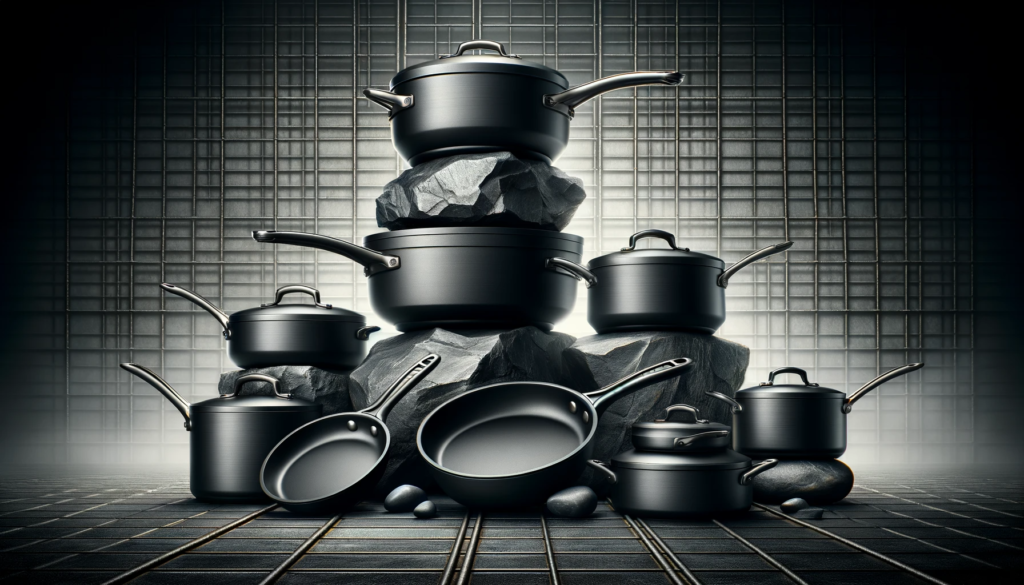
Hard anodized cookware is extremely durable due to its hard anodized aluminum construction.
The anodizing process helps create an oxide layer on the surface of the aluminum, making the pans highly wear and corrosion resistant.
The surface hardness measures much higher than stainless steel, making it very resistant to scratches, chips, cracks and dents even with heavy use over time.
This extreme durability also lends to excellent heat resistance properties.
Many hard anodized pans come with impressive warranties of 10 years or longer, which speaks to their durability and resilience.
On the other hand, stainless steel cookware has moderate surface hardness, but the softer steel alloy construction means pans can be more prone to denting issues over time.
Denting impacts heat distribution by creating hot and cold spots during cooking.
Extended exposure to very high temperatures can also cause stainless steel cookware to warp over time.
While stainless steel offers reasonable durability for daily cooking tasks, hard anodized maintains its original condition much longer even after prolonged heavy duty usage.
Cooking Performance
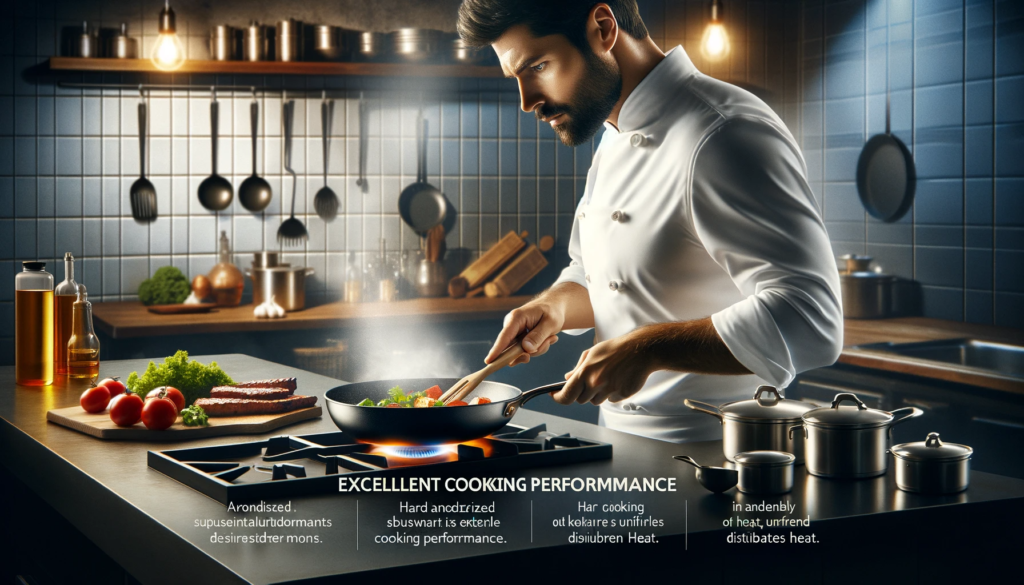
The hard, highly conductive aluminum construction of hard anodized pans enables excellent cooking performance capabilities.
Heat spreads very evenly and quickly across the entire cooking surface, meaning there are virtually no hot or cold spots whatsoever during cooking.
This uniform heat distribution allows thorough cooking without any frustrating overcooked or undercooked patches.
The highly responsive heat conductivity also makes hard anodized ideal for handling sensitive cooking techniques like stir frying, pan frying or searing meats.
Food develops the desired beautifully browned flavorful exterior while interiors finish to the preferred doneness gently and evenly.
However, less conductive stainless steel has some limitations when it comes to consistent heat distribution from base to walls.
The multi-layered construction means heat does not travel as smoothly or efficiently from bottom to sides, resulting in notable differences in heat levels across the pan.
This lower conductivity coupled with hot and cold spots can frequently lead to food burning in extremely hot areas while being frustratingly undercooked in others.
For simple boiling or braising, stainless steel can deliver reasonably good results.
But for advanced cooking techniques demanding responsive temperature control, hard anodized cookware is better equipped to excel.
Ease of Use
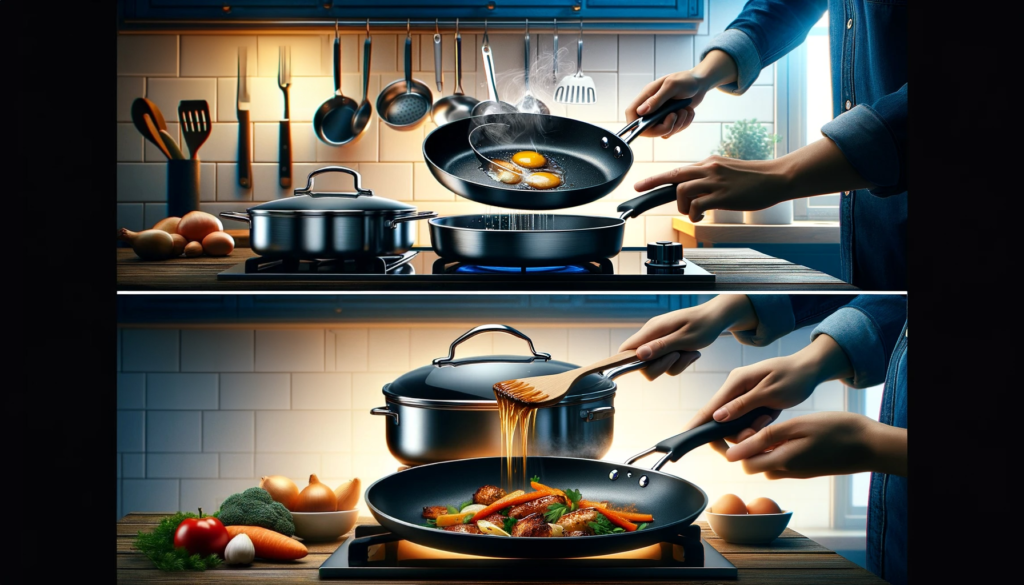
Most quality hard anodized pans utilize a durable PFOA-free non stick coating on cooking surfaces.
This makes both the cooking process and post-meal clean up an absolute breeze.
Foods release effortlessly from the ultra slick nonstick surface without demanding large amounts of added fats or oils during cooking.
Any minor browned residue basically slides right off with barely any effort after cooking.
On the other hand, stainless steel’s naturally slick but not nonstick surface means extra fats like oil or butter generally need to be used to prevent ingredients from sticking or burning.
Deglazing the pan is also frequently required to dissolve any stubborn browned fond bits after cooking.
Cleaning hard anodized pans by hand is fast and simple even with heavy residue thanks to the nonstick advantage requiring barely any scrubbing.
Stainless steel pans necessitate a bit more intensive scrubbing effort to remove cooked-on residues.
However, with proper usage practices like consistent deglazing or soaking after cooking, cleanup of stainless steel is reasonably manageable too.
Both hard anodized and stainless steel cookware are conveniently dishwasher safe as well, further supporting ease of use for busy cooks.
Health Safety
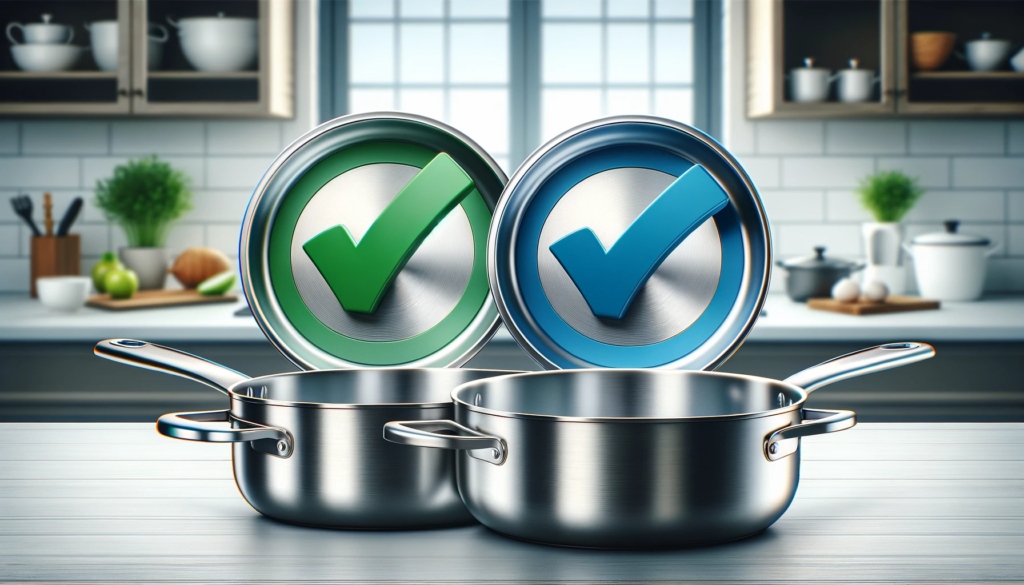
In the past, the aluminum base construction of hard anodized pans had sparked health safety concerns regarding leaching and reactivity.
However, current manufacturing technology renders the aluminum fully inert and safe for food contact under normal everyday cooking scenarios.
On the other hand, the use of nonstick coatings previously involved concerning levels of the toxic chemicals PFOA and PFOS associated with health issues when ingested.
Thankfully today most reputable nonstick cookware brands use greener Scotch Guard type ceramic-based coatings which minimize this risk dramatically.
Stainless steel cookware circumvents this particular issue altogether due to its simple stainless alloy metal construction without any nonstick coating.
Regardless of material, all cookware does require proper usage practices for optimal safety.
Overheating any empty pan can accelerate degradation of nonstick coatings over time and in extreme cases even release dangerous fumes.
Cost
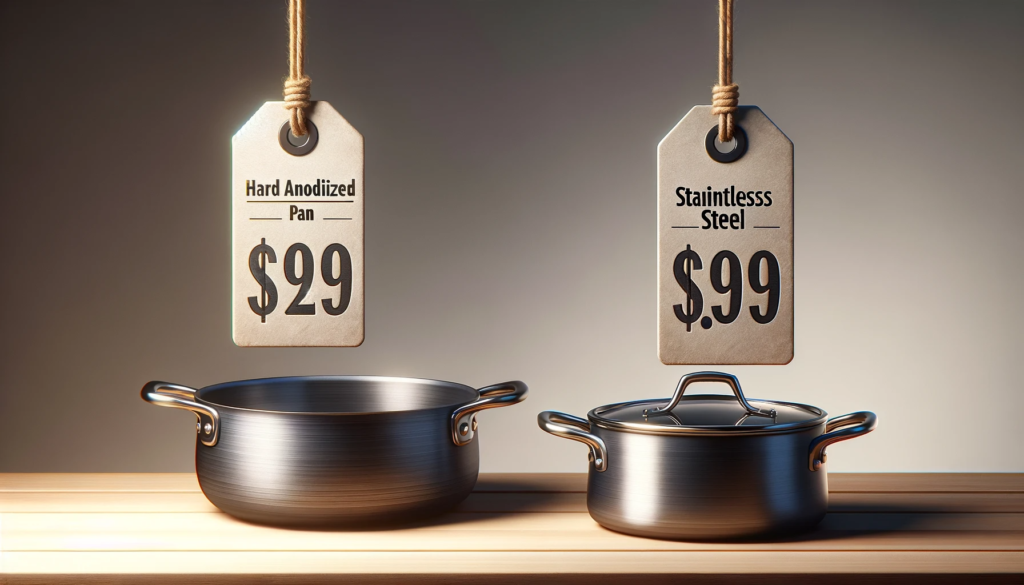
When it comes to budget-friendliness, quality hard anodized cookware dominates stainless steel by a significant value margin.
Simple straight-walled saucepans start at less than $20 per piece while basic fry pans are available from just $30.
Even hard anodized cookware engineered with double or triple-ply designs for superior heat responsiveness remains very affordable at under $100 for a good quality sauté pan set.
Top tier brands offering exceptional copper core hard anodized construction cost over $200 per piece but still pale in comparison pricing-wise to equivalent all-clad stainless steel cookware.
Budget friendly lightweight stainless steel pots and pans tailored more towards everyday moderate use generally start from $15 per piece.
Premium heavy gauge triply options with internal aluminum or copper core layers designed for professional caliber cooking performance easily hover in the several hundred dollar range, especially for higher volume stockpot sets.
Aesthetics
With its sleek utilitarian appearance in various nondescript dark gray shades, hard anodized cookware admittedly lacks some decorative visual allure.
The rugged functional workhorse design takes precedence over artistic beauty for hard anodized pieces.
While stainless steel may not win major style awards either, its iconic shiny metallic look has slightly more aesthetic charm and suits both modern and classic kitchen decors.
However for most everyday home cooks seeking reliable high performing pans to churn out delicious meals efficiently, visual appeal matters less than durability and cooking prowess.
Unless kept permanently on display in an open concept kitchen, the no-frills visuals of workhorse cookware are generally secondary to performance.
Perhaps the exception is for cookware kept out on open display in a sleek ultra-modern minimalist kitchen design motif rather than tucked away conveniently.
Conclusion
In conclusion, while both hard anodized and stainless steel have merits, hard anodized edges out stainless steel for its unbeatable durability, cooking prowess, nonstick convenience, health safety and affordability.
Unless the visual beauty of stainless steel is an absolute must, hard anodized makes for a wiser investment that outperforms in nearly all aspects.
